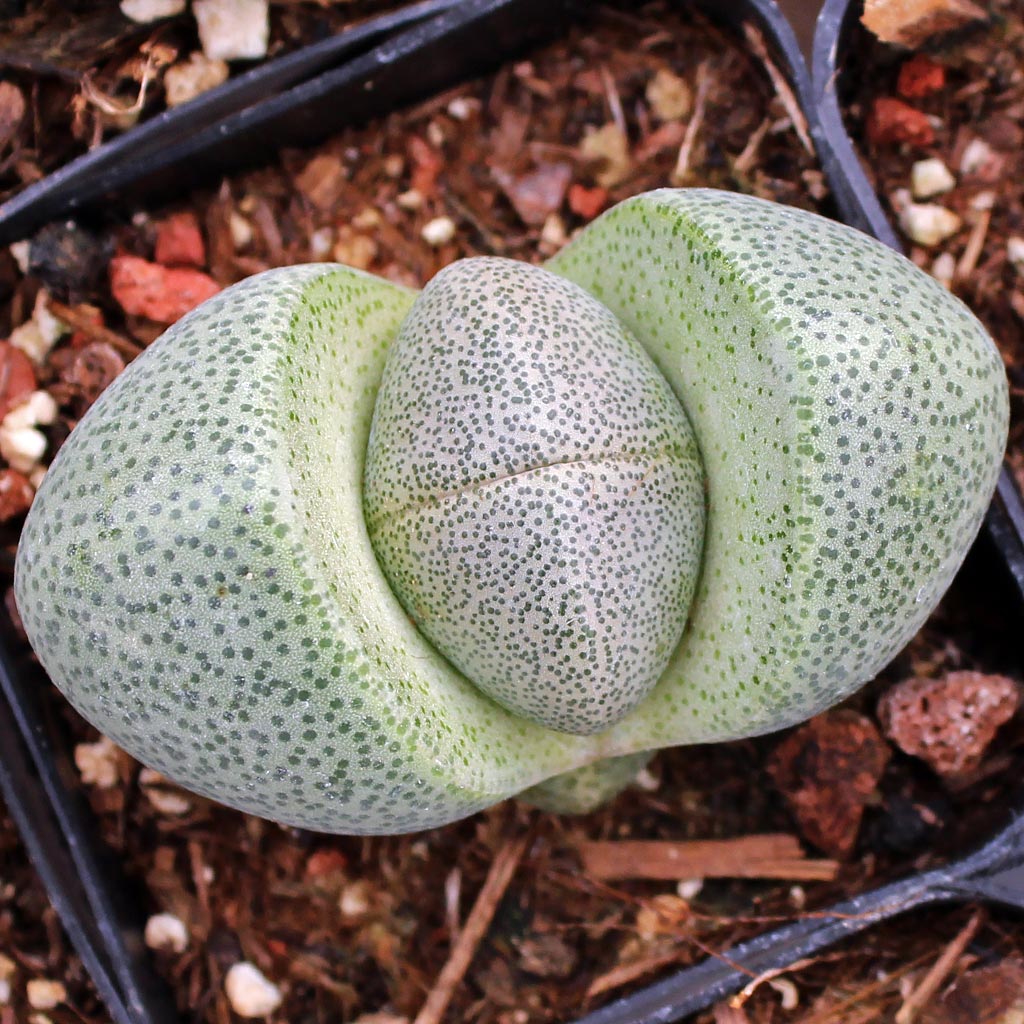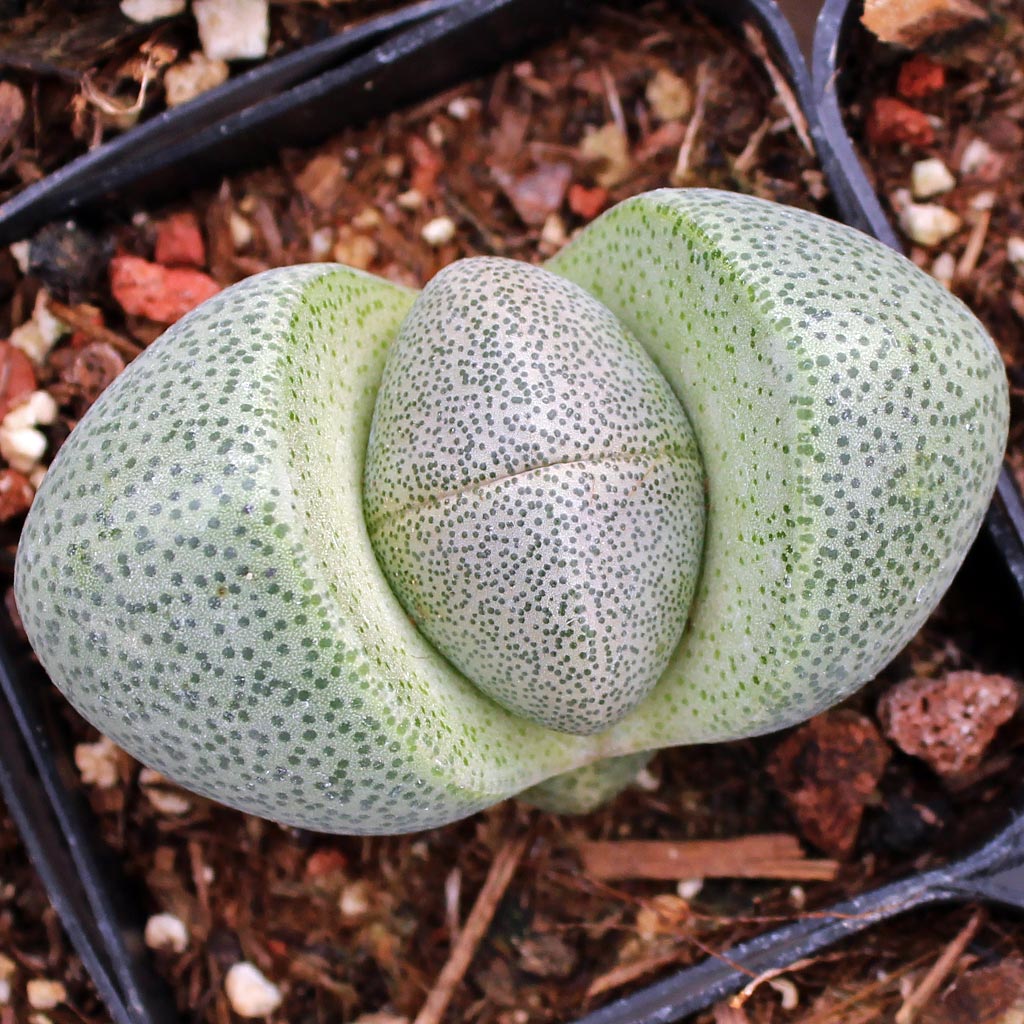Staff Answer
Jun 26, 2023 - 06:23 AM
The differences are most apparent in shape, which is a natural extension of belonging to two different genera.
Living stones, or Lithops, is a genus of short succulent plants that rarely get over 1" in height. The plant maintains two leaves at a time. When it makes new leaves, it transfers water from the old leaves to the new leaves until the old leaves wither and fall away. The new leaves swell and take their place. Because we're talking about a whole genus of plants here, there are specific species of Lithops that differ from each other. They differ primarily in flower and leaf color. Finally, Lithops feature leaf "windows", transparent portions of the leaf that allow light to enter even if the rest of the plant is buried in the soil.
Pleiospilos nelii, or split rock, is a species of succulent that is much taller than Lithops, It can get up to 3" tall. It maintains four leaves at a time with the oldest leaves sloughing off to make way for the newest leaves. We're talking about a specific species in this case, so there's much less variation in color and size. Pleiospilos nelii has leaf windows, but they're much smaller than in Lithops.
Living stones, or Lithops, is a genus of short succulent plants that rarely get over 1" in height. The plant maintains two leaves at a time. When it makes new leaves, it transfers water from the old leaves to the new leaves until the old leaves wither and fall away. The new leaves swell and take their place. Because we're talking about a whole genus of plants here, there are specific species of Lithops that differ from each other. They differ primarily in flower and leaf color. Finally, Lithops feature leaf "windows", transparent portions of the leaf that allow light to enter even if the rest of the plant is buried in the soil.
Pleiospilos nelii, or split rock, is a species of succulent that is much taller than Lithops, It can get up to 3" tall. It maintains four leaves at a time with the oldest leaves sloughing off to make way for the newest leaves. We're talking about a specific species in this case, so there's much less variation in color and size. Pleiospilos nelii has leaf windows, but they're much smaller than in Lithops.





![Lithops - Living Stones [limited] Questions & Answers](https://answers.mountaincrestgardens.com/product/1978061/images/Lithops-Living-Stones-limited.jpg)

Add New Comment